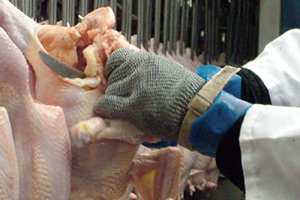US poultry plant inspections to focus on food safety

The US Government Accountability Office (GAO) has issued its report about the US Department of Agriculture’s (USDA) proposal to modernise poultry inspection and the pilot program the proposal is based on, known as the HACCP-based Inspection Models Project (HIMP).
“The National Chicken Council (NCC) agrees with GAO’s conclusions that strengths of the modernised poultry inspection system include giving plants responsibility and flexibility for ensuring food safety and quality and allowing USDA inspectors to focus more on food safety activities,” said Ashley Peterson, NCC vice president of scientific and regulatory affairs.
“This proposal is about making food safer – period,” Peterson said. “In an effort to continue our progress towards reducing foodborne illnesses, we believe that the poultry inspection system should be modernised to transition to a model that is more science and risk-based, from one that was implemented in 1957.”
In response to GAO’s recommendation for disclosure and more data needed to clarify the impact of changes to poultry inspection, USDA’s Food Safety and Inspection Service (FSIS) said in the report that the agency has already updated the analyses used to support the proposed rule, and the results continue to support moving forward with it. According to the report, FSIS will present the updated analyses with it issues the final rule, in a manner that will facilitate public understanding of the information used to support the rulemaking.
Peterson also addressed the issue of increased line speeds and claims of their effects on worker safety and food safety.
“OSHA data speaks for itself: we have a sustained record of improving the safety of our workplace during the last two decades. Over the past 14 years of this pilot program there has been no evidence to substantiate the assertion that increased line speeds will increase injuries.
“It is not in a poultry company’s best interests to operate at speeds that would harm its workers, and common sense tells you it is not in a company’s best interest to operate at speeds that cannot produce safe and high quality poultry products,” she said. Further, USDA already has plans to produce compliance guidelines that would streamline the training of poultry slaughter employees who conduct carcass and associated viscera sorting activities.
“One thing is certain – whether chicken plants operate under traditional inspection or choose to opt in to this voluntary, modernised inspection system, the end result is the same – rigorous food safety standards are applied to all chicken products and these products must meet or exceed these safety standards set forth by USDA in order to reach consumers,” Peterson concluded.













